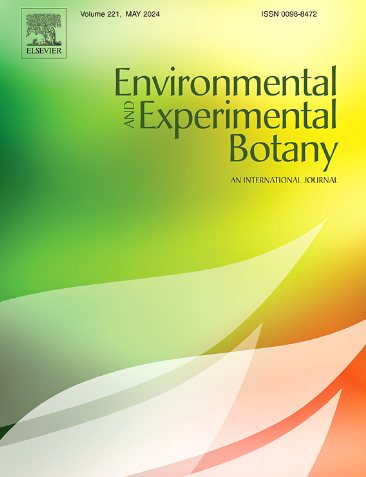Xylem anatomical structure as a determinant of hydraulic trait variation in C3 plant Reaumuria soongorica and C4 plant Salsola passerina
IF 4.7
2区 生物学
Q2 ENVIRONMENTAL SCIENCES
引用次数: 0
Abstract
Moisture variation significantly impacts hydraulic traits and xylem anatomical structure in woody plants, thereby influencing water transport and embolism resistance. However, the precise relationship between these factors within desert shrubs remains unclear, and it may be related to plant functional types. We conducted a water manipulation experiment involving seedlings of the C3 plant Reaumuria soongorica and the C4 plant Salsola passerina within a rain shelter. We applied three water treatments: control, chronic drought, and flash drought. After a period of drought treatment, seedlings were rewatered to control level for 15 days, after which hydraulic traits and anatomical structures were measured. We found that: (1) vessel density was positively correlated with sapwood specific conductivity for R. soongorica, while hydraulic weighted vessel diameter positively correlated with embolism resistance; both hydraulic weighted vessel diameter and vessel internal diameter span was positively correlated with sapwood specific conductivity for S. passerina; (2) R. soongorica had lower edge density yet higher modularity compared to S. passerina; (3) sapwood and leaf specific conductivity emerged as hub traits in R. soongorica, while vessel internal diameter span was identified as a hub trait in S. passerina, thus serving as important predictors of hydraulic function and related attributes. Our study demonstrates distinct hydraulic strategies in the two species. R. soongorica employs a highly modular trait combination to adapt to water fluctuations, maintaining both high hydraulic efficiency and embolism resistance under drought stress. Conversely, S. passerina integrates traits for efficient resource access, ensuring hydraulic efficiency but compromising embolism resistance under drought stress. Integrating hydraulic traits with anatomical structures significantly enhances predictions of desert shrub resilience to drought within the context of global climate change.
木质部解剖结构对C3植物红砂和C4植物沙参水力性状变异的影响
水分变化显著影响木本植物的水力性状和木质部解剖结构,从而影响水分输送和抗栓塞性。然而,在沙漠灌木中,这些因子之间的确切关系尚不清楚,可能与植物的功能类型有关。我们在一个雨棚内进行了C3植物红砂蒿和C4植物雀尾草幼苗的水分操纵实验。我们采用了三种水处理:控制、慢性干旱和突发性干旱。干旱处理一段时间后,将幼苗重新浇水至控制水平15 d,之后测量水力学性状和解剖结构。结果表明:(1)红砂血管密度与边材比电导率呈正相关,水力加权血管直径与栓塞阻力呈正相关;水力加权容器直径和容器内径跨度与木条边材比电导率均呈正相关;(2)红砂的边缘密度较低,但模块化程度较高;(3)边材和叶片比电导率是红砂的枢纽性状,而管道内径跨度是金针花的枢纽性状,可以作为水力功能和相关属性的重要预测因子。我们的研究证明了这两个物种不同的水力策略。红砂采用高度模块化的性状组合来适应水分波动,在干旱胁迫下保持高水力效率和抗栓塞性。相反,S. passerina整合了高效资源获取的特性,确保了水力效率,但在干旱胁迫下损害了抗栓塞性。在全球气候变化的背景下,将水力特征与解剖结构相结合可以显著提高对沙漠灌木抗旱能力的预测。
本文章由计算机程序翻译,如有差异,请以英文原文为准。
求助全文
约1分钟内获得全文
求助全文
来源期刊

Environmental and Experimental Botany
环境科学-环境科学
CiteScore
9.30
自引率
5.30%
发文量
342
审稿时长
26 days
期刊介绍:
Environmental and Experimental Botany (EEB) publishes research papers on the physical, chemical, biological, molecular mechanisms and processes involved in the responses of plants to their environment.
In addition to research papers, the journal includes review articles. Submission is in agreement with the Editors-in-Chief.
The Journal also publishes special issues which are built by invited guest editors and are related to the main themes of EEB.
The areas covered by the Journal include:
(1) Responses of plants to heavy metals and pollutants
(2) Plant/water interactions (salinity, drought, flooding)
(3) Responses of plants to radiations ranging from UV-B to infrared
(4) Plant/atmosphere relations (ozone, CO2 , temperature)
(5) Global change impacts on plant ecophysiology
(6) Biotic interactions involving environmental factors.
 求助内容:
求助内容: 应助结果提醒方式:
应助结果提醒方式:


